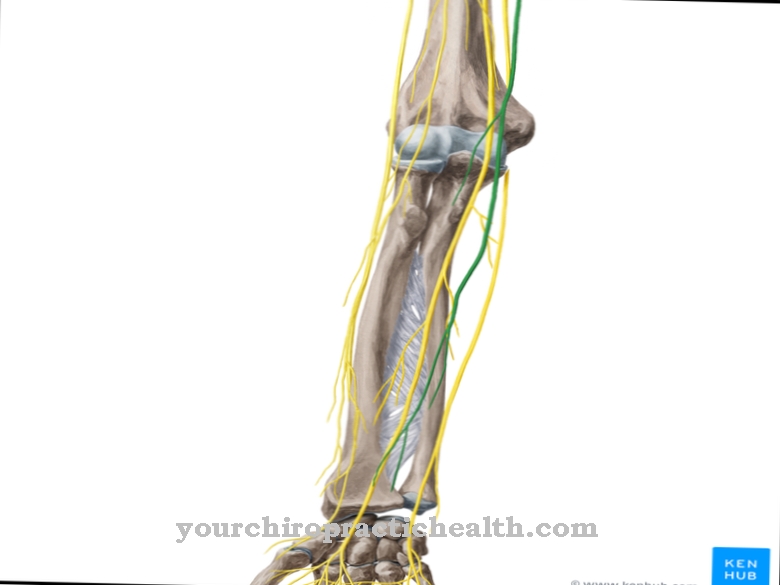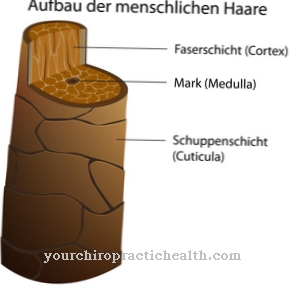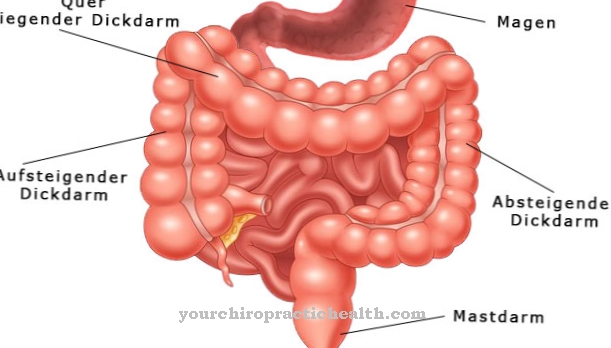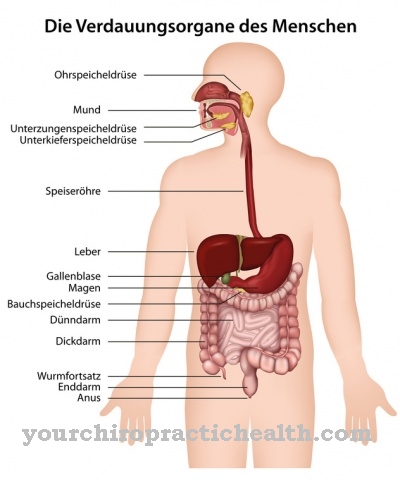A Bronchiolus is a small branch of the bronchi. It belongs to the lower respiratory tract. Solitary inflammation of the bronchioli is known as bronchiolitis.
What is a bronchiolus?
The bronchioli are part of the lung tissue. Lung tissue is the tissue that makes up the lungs. It is formed on the one hand from the bronchi and on the other hand from the alveoli. The alveoli are the structural elements of the lungs. This is where the gas exchange takes place between the blood and the inhaled air.
The bronchi are also part of the airways. The tubular structures lead from the windpipe to the lungs and transport the air we breathe to the alveoli. The bronchioli are the smallest sections of the bronchi. The trachea initially divides into the two main trunks at the so-called bifurcation. Out of these bronchi principalis dexter et sinister towards smaller branches. The bronchi lobaris superior, medius and inferior form the so-called bronchial tree. They provide ventilation for the right or left lung.
The lobe bronchi are divided into ten segment bronchi on the right and nine on the left. These are also called segmental bronchi. The lobular bronchi (bronchi lobulares) and finally the bronchioli emerge from the segment bronchi.
Anatomy & structure
The bronchioli can be divided into bronchioli, bronchioli terminales and bronchioli respiratorii. In contrast to the bronchial branches, the small branches of the bronchi no longer have any cartilage or seromucous glands.
Seromucosal glands produce liquid mucus. The diameter of the bronchioles is less than one millimeter. They are lined with a single layer of ciliated epithelium. In contrast to the rest of the respiratory tract, the cells here are cubic and not cylindrical. Between the epithelial cells there are mucus-producing goblet cells, neuroendocrine cells and phagocytes. The scavenger cells of the bronchioli are called Clara cells. Clara cells are specialized cells of the respiratory epithelium. There is a layer of muscular tissue beneath the respiratory epithelium. The muscles are smooth and can therefore not be controlled arbitrarily.
The bronchioles branch into four to five terminal bronchioles. These terminal bronchioles are the final section of the airway that carries air. They in turn branch into the respiratory bronchioles (bronchioli respiratorii). The respiratory bronchioles are one of the gas-exchanging parts of the airways. There are some air sacs (alveoli) in its wall. The bronchioli respiratorii end in the alveolar sacs (Saccus alveolaris) directly above the passages of the alveoli (Ductus alveolares).
Function & tasks
The bronchioli are primarily used for air transport. When inhaled, the air enters the windpipe through the mouth or nose and from there into the two main trunks. Via the branched bronchial tree, the air is passed on to the bronchioli, which bring the air to the alveoli. The bronchioli, like the bronchi, also take on defense functions. They are lined with ciliated epithelium.
The ciliated epithelium consists of small hairs that can move independently. They beat in a common rhythm towards the oral cavity. Foreign bodies, dust particles and pathogens stick to the cilia and in the mucus that is produced in the goblet cells of the bronchial epithelium. With the movement of the ciliated epithelium, they are transported towards the oral cavity. There the pathogens or particles are swallowed and rendered harmless in the stomach by the gastric acid. The Clara cells of the bronchial epithelium also have an immune function. They secrete various proteins that serve the immune defense. This includes the Clara cell secretory protein.
Components of the surfactant factor are also secreted by the Clara cells. The surfactant proteins SP-A and SP-D have an antimicrobial effect. They also act as opsonins. Opsonins are proteins that play a role in mediating phagocytosis. They are therefore an important part of the immune system. The opsonins of the Clara cells facilitate the phagocytosis of pathogens, allergens and dust particles for the scavenger cells of the alveoli, the so-called alveolar macrophages. Apparently the Clara cells also take on a reserve function for the cell replacement in the airways.
Diseases
Inflammation of the bronchioli is also known as bronchiolitis. The small bronchioles become inflamed most often in young children and infants because their airways are more vulnerable than the airways of adults.
The peak of bronchiolitis is between three and six months of age. Usually the disease only occurs in the first two years of life. It is noticeable that children who are not breastfed fall ill more often than breastfed children. Children from smoking families also have a higher risk of developing the disease. The main cause of bronchiolitis are respiratory syncytial viruses (RS viruses). The disease usually begins in spring or winter. Influenza viruses or adenoviruses can also cause bronchiolitis. The pathogen is usually transmitted via droplet infection.
The pathogens enter the body through the mucous membrane of the nose or the conjunctiva. Adenoviruses in particular can also be transmitted via contaminated objects such as toys. The incubation period is between two and eight days, depending on the pathogen. After the pathogen enters, it rapidly multiplies on the bronchial mucous membrane. Depending on the course, a distinction can be made between acute and persistent bronchiolitis. Persistent bronchiolitis, however, is much less common. It is observed almost exclusively in infections with adenoviruses.
The bronchioles have only a very small diameter, so that the inflammation-related swelling of the bronchial mucosa leads to a significant restriction in breathing. Typical symptoms are accordingly coughing, rapid and shallow breathing, the erection of the nostrils when inhaling and exhaling and the drawing in of the chest. The breathing symptoms are accompanied by fever and fatigue. In most cases, bronchiolitis heals on its own after a week.
Typical & common bronchial diseases
- bronchitis
- cough
- Chronic bronchitis
- asthma



























